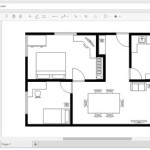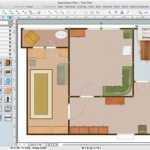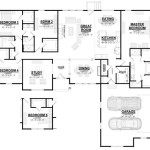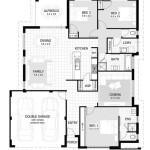Single Story Colonial House Plans: A Detailed Exploration
The Colonial style of architecture, rooted in America's early history, continues to resonate with homeowners seeking a blend of tradition, simplicity, and functionality. When adapted to a single-story layout, Colonial house plans offer accessibility and convenience without sacrificing the timeless appeal of this iconic architectural style. This article provides a comprehensive look at single-story Colonial house plans, exploring their characteristics, benefits, design considerations, and variations.
Colonial architecture in the United States evolved from the building traditions of European settlers, primarily English, Dutch, and Spanish. These early homes were adapted to the American climate and available resources, resulting in regional variations that showcase the ingenuity and practicality of the colonists. While traditionally associated with multiple stories, the single-story adaptation retains core Colonial elements while catering to contemporary lifestyles and accessibility needs.
Key Characteristics of Single Story Colonial House Plans
Single-story Colonial house plans, while simplified in verticality, maintain several crucial characteristics that define the style. Recognizing these elements is essential for appreciating and implementing successful designs.
Symmetrical Facade: A hallmark of Colonial architecture is its symmetrical facade. A central front door is typically flanked by an equal number of windows on either side, creating a balanced and visually pleasing exterior. This symmetry extends to the roofline, which is often a simple gable or hip design. Single-story versions preserve this characteristic, though the elongated horizontal plane requires careful consideration of window placement and proportion to maintain the aesthetic balance. For instance, wider single-story designs may benefit from dormers to break up the roofline and add visual interest while preserving the symmetrical facade below.
Rectangular Footprint: Colonial homes traditionally have a rectangular footprint, optimizing space and construction efficiency. Single-story Colonial homes generally adhere to this principle, allowing for efficient room layouts and ease of construction. While variations exist, straying too far from the rectangular shape can compromise the overall Colonial aesthetic. Consider the impact of attached garages or extended wings on the symmetry and proportion of the facade. Careful landscaping can also help to visually balance any deviations from the rectangular form.
Simple Rooflines: Gable and hip roofs are common in Colonial architecture. Single-story designs typically feature these roof styles, though the lower profile requires attention to detail. The pitch of the roof should be carefully considered to avoid an overly flat or disproportionately steep appearance. Dormers, as mentioned earlier, can enhance the roofline visually, providing natural light to interior spaces and adding architectural interest. Shingle material also plays a key role in the overall aesthetic. Traditional asphalt shingles, wood shingles, or even metal roofing can be used to achieve the desired look, depending on budget and regional preferences.
Emphasis on Functionality: Early Colonial homes prioritized functionality and practicality. Single-story adaptations often reflect this emphasis by incorporating open floor plans and efficient layouts that cater to modern living. While maintaining distinct living spaces, many designs opt for a seamless flow between the kitchen, dining area, and living room, fostering a sense of connection and facilitating social interaction. The inclusion of features such as mudrooms, home offices, and ample storage space further enhances the functionality of the home.
Traditional Materials: While modern materials can be incorporated, single-story Colonial house plans often utilize traditional materials to achieve an authentic look. Wood siding, brick, and stone accents are common choices, and the selection of materials can significantly impact the overall character of the home. Window and door trim, shutters, and decorative elements also contribute to the traditional aesthetic. Consider the color palette carefully, opting for classic Colonial hues such as white, gray, or muted earth tones. The use of contrasting trim can further accentuate the architectural details and add visual interest.
Benefits of Single Story Colonial House Plans
Beyond the aesthetic appeal, single-story Colonial house plans offer several practical advantages that make them an attractive option for a wide range of homeowners.
Enhanced Accessibility: Eliminating stairs makes single-story homes ideal for individuals with mobility issues, families with young children, and those planning to age in place. The absence of stairs reduces the risk of falls and provides a safer and more comfortable living environment for people of all ages and abilities. This accessibility extends beyond physical mobility; single-story living simplifies tasks such as carrying groceries, laundry, and other household items.
Simplified Maintenance: Single-story homes generally require less maintenance than multi-story dwellings. Exterior painting, window cleaning, and roof repairs are typically easier and safer to perform on a single-story structure. Interior maintenance is also simplified, as all living spaces are on a single level, reducing the need to move between floors for cleaning, repairs, and general upkeep. Landscaping is also simplified, as the entire perimeter of the home is readily accessible.
Improved Energy Efficiency: Single-story homes often benefit from improved energy efficiency due to reduced heat loss through the roof. In multi-story homes, heat rises, leading to higher energy consumption for heating and cooling. Single-story homes minimize this effect, resulting in lower utility bills. Moreover, the compact design of single-story homes allows for more efficient heating and cooling systems. Proper insulation and energy-efficient windows and doors can further enhance the energy performance of the home.
Open Floor Plans: As mentioned previously, single-story Colonial adaptations often incorporate open floor plans, creating a more spacious and connected living environment. This design approach is particularly appealing to families who value social interaction and enjoy entertaining guests. Open floor plans also allow for greater flexibility in furniture arrangement and interior design. The seamless flow between living spaces enhances the sense of spaciousness and provides a more comfortable and inviting atmosphere.
Ease of Expansion: While single-story by definition, expanding a single-story Colonial home is often easier than expanding a multi-story dwelling. Adding an addition to the side or rear of the home can be a relatively straightforward process, depending on the site conditions and local building codes. This flexibility allows homeowners to adapt their living space to changing needs over time, such as the arrival of new family members or the desire for additional living space.
Design Considerations for Single Story Colonial House Plans
Designing a successful single-story Colonial house plan requires careful consideration of several factors to ensure that the home meets the needs and preferences of the homeowner while maintaining the integrity of the Colonial style.
Site Orientation: The orientation of the home on the property is crucial for maximizing natural light, optimizing energy efficiency, and enhancing curb appeal. Consider the position of the sun throughout the day and orient the home to take advantage of passive solar heating in the winter and minimize heat gain in the summer. Proper site orientation can also help to protect the home from prevailing winds and other environmental factors. The placement of windows and doors should be carefully considered to maximize natural light and ventilation while maintaining privacy.
Room Layout: The layout of the rooms within the home should be carefully planned to ensure efficient use of space and a comfortable living environment. Consider the flow between rooms and the placement of furniture and fixtures. A well-designed layout will minimize wasted space and maximize functionality. The location of bedrooms, bathrooms, and living areas should be carefully considered to ensure privacy and convenience. The inclusion of features such as walk-in closets, pantries, and mudrooms can further enhance the functionality of the home.
Window and Door Placement: The placement of windows and doors is critical for both aesthetic appeal and functionality. Windows should be strategically placed to maximize natural light and ventilation while maintaining privacy. The size and style of the windows should be carefully considered to complement the Colonial aesthetic. Doors should be placed to provide convenient access to outdoor spaces and to facilitate the flow between rooms. The selection of window and door hardware, such as knobs, hinges, and locks, can also contribute to the overall character of the home.
Exterior Details: Exterior details play a significant role in defining the Colonial style of the home. Elements such as shutters, trim, columns, and porch railings can significantly enhance the curb appeal of the home. The selection of materials and colors should be carefully considered to complement the overall design. Landscaping can also play a crucial role in enhancing the exterior appearance of the home. Consider planting trees, shrubs, and flowers that are appropriate for the local climate and that complement the Colonial aesthetic.
Interior Design: The interior design of the home should complement the Colonial style and reflect the personal tastes of the homeowner. Consider using traditional colors, patterns, and materials to create an authentic Colonial atmosphere. Furniture should be carefully selected to complement the architectural style of the home. The inclusion of decorative elements such as artwork, rugs, and lighting fixtures can further enhance the interior design. Consider using natural materials such as wood, stone, and brick to create a warm and inviting atmosphere.

Single Story Colonial House Plans

Colonial House Plans The Plan

Colonial Type Single Floor Home 1800 Square Feet Kerala Design And Plans 9k Dream Houses

4 Bedroom Single Storied Colonial Home Design

Dewi288 Memberikan Anda Semua Kemudahan Dalam Bertransaksi

Colonial Style House Plan 3 Beds 2 Baths 1640 Sq Ft 21 338 Houseplans Com

Single Floor Colonial Mix House Kerala Home Design And Plans 9k Dream Houses

Coleridge 5556 3 Bedrooms And 2 5 Baths The House Designers

Colonial Style 3 Bedroom Single Storied Garden Home Free Plan Kerala Planners
:strip_icc()/pitched-roof-colonial-style-home-3509bf85-294bfbdbace449ab876e1d05fa5262b6.jpg?strip=all)
18 Colonial Houses With Classic Looks And Enduring Charm








